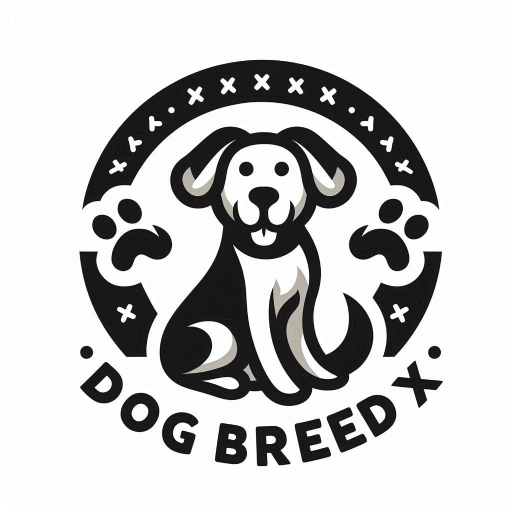Table of Contents
Xoloitzcuintli – Mexican Hairless Dog Breed
The Mexican Hairless Dog, known as the Xoloitzcuintli (pronounced show-low-eats-QUEENT-lee) or simply Xolo, is a unique and ancient breed that has captured the hearts of dog enthusiasts worldwide. Known for its distinctive hairless appearance and rich cultural heritage, the Xoloitzcuintli is a breed that stands out for its elegance, intelligence, and loyalty. Whether you are a seasoned dog owner or considering your first pet, the Mexican Hairless Dog offers a fascinating blend of history, charm, and companionship.
History and Origin

The Xoloitzcuintli is one of the oldest and rarest dog breeds in the world, with a history that dates back over 3,000 years. Originating in Mexico, this breed was highly regarded by the Aztecs, Toltecs, and Maya civilizations. The name “Xoloitzcuintli” is derived from the Aztec god Xolotl and the Nahuatl word “itzcuintli,” meaning dog. These ancient civilizations believed that the Xolo had mystical healing powers and served as a guide for the dead in the afterlife.
The breed nearly vanished after the Spanish conquest of Mexico, but thanks to dedicated breeders and enthusiasts, the Xoloitzcuintli has made a remarkable comeback. Today, it is recognized by major kennel clubs and continues to be a symbol of Mexican heritage and pride.
Physical Characteristics
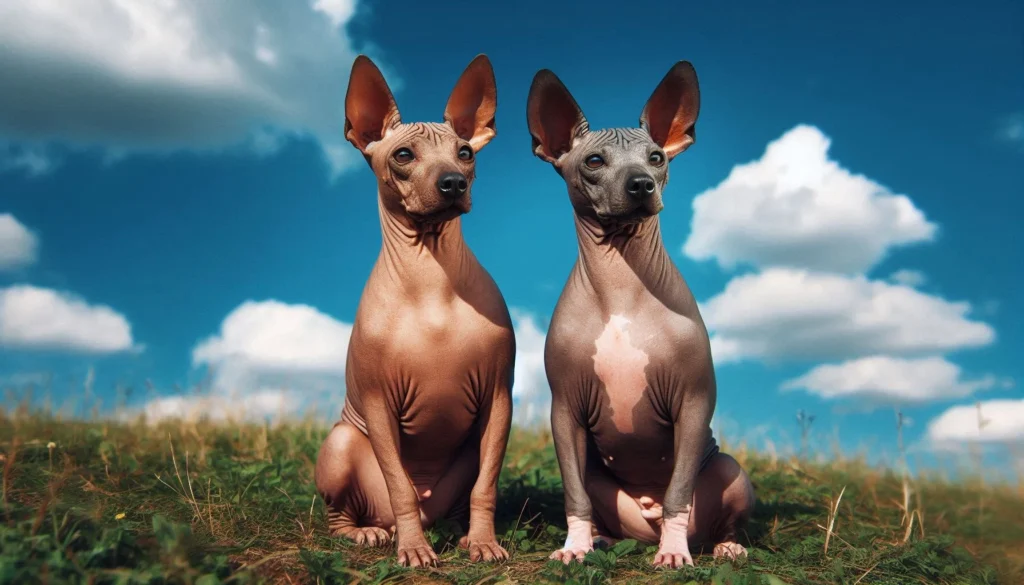
The Xoloitzcuintli comes in three sizes: toy, miniature, and standard, making it a versatile breed suitable for various living environments.
Size and Weight
- Toy Xolo: 10-14 inches tall, weighing 10-15 pounds
- Miniature Xolo: 14-18 inches tall, weighing 15-30 pounds
- Standard Xolo: 18-23 inches tall, weighing 30-55 pounds
Coat and Colors
The breed is most famous for its hairless variety, which has smooth, tough skin that can come in various colors, including black, gray, red, bronze, and slate. There is also a coated variety with a short, flat coat that requires minimal grooming.
Distinctive Features
The Xolo has a sleek, muscular build with a graceful gait. Its almond-shaped eyes and large, expressive ears add to its unique and elegant appearance.
Temperament and Personality
The Xoloitzcuintli is known for its calm, intelligent, and loyal nature. These dogs form strong bonds with their families and are often described as velcro dogs because they love to stay close to their human companions.
Interaction with People
Xolos are generally affectionate and gentle with their family members. They are known to be good with children, although supervision is recommended with very young kids to ensure mutual respect and safety.
Interaction with Other Animals
The breed typically gets along well with other dogs, especially if socialized from a young age. They can be wary of strangers, making them excellent watchdogs, but they are not aggressive by nature.
Health and Lifespan
The Xoloitzcuintli is a relatively healthy breed with an average lifespan of 13-18 years. However, like all breeds, they are prone to certain health issues.
Common Health Issues
- Skin Problems: Due to their hairless nature, Xolos are susceptible to skin issues such as sunburn, acne, and dryness. Regular moisturizing and sun protection are essential.
- Dental Issues: Hairless Xolos often have missing teeth, so dental care is crucial.
- Hip Dysplasia: This is a common issue in many dog breeds, including the Xolo.
Health Tips
Regular vet check-ups, a balanced diet, and adequate exercise can help keep your Xoloitzcuintli healthy. Additionally, proper skin care and dental hygiene are vital for this breed.
Care and Grooming
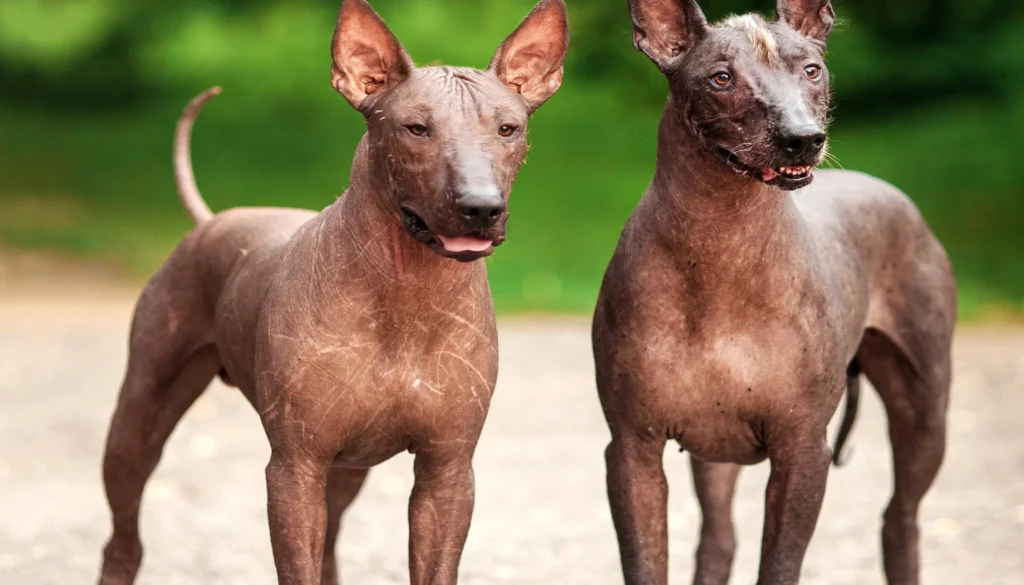
Caring for a Xoloitzcuintli involves specific grooming routines, exercise, and dietary needs.
Grooming Needs
- Hairless Variety: Requires regular moisturizing and sun protection. Bathe them weekly with a gentle, hypoallergenic shampoo.
- Coated Variety: Requires minimal grooming, just regular brushing to keep the coat clean.
Exercise Requirements
Xolos are moderately active dogs that enjoy daily walks and playtime. They are agile and enjoy activities like agility training and fetch.
Dietary Recommendations
A balanced diet with high-quality dog food is essential. Consult your vet for specific dietary needs based on the dog’s size and age.
Training and Socialization
Training a Xoloitzcuintli can be a rewarding experience due to their intelligence and eagerness to please.
Training Tips
- Positive Reinforcement: Use treats, praise, and affection to encourage good behavior.
- Consistency: Be consistent with commands and rules to avoid confusion.
- Early Socialization: Expose them to various environments, people, and animals from a young age to develop a well-rounded temperament.
Challenges
Xolos can be independent and stubborn at times, so patience and persistence are key.
Suitability as a Family Pet
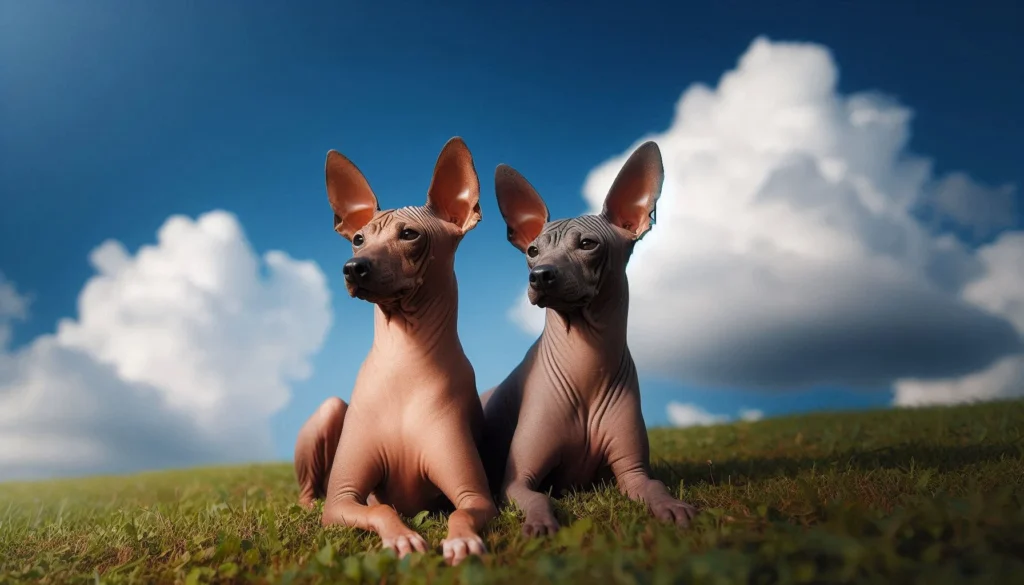
The Xoloitzcuintli is an excellent family pet for the right household.
Living Environment
They adapt well to both apartments and houses with yards. However, they do not tolerate extreme cold well, so they should be kept indoors during cold weather.
Energy Levels
Xolos have moderate energy levels and enjoy regular exercise but are also content to relax with their family.
Fun Facts and Trivia
- The Xoloitzcuintli was designated as a national treasure of Mexico in 2010.
- They are often referred to as “Mexican Hot Dogs” due to their warm skin.
- Xolos have appeared in various forms of Mexican art and folklore for centuries.
Dog Breeds Similar to Mexican Hairless Dog
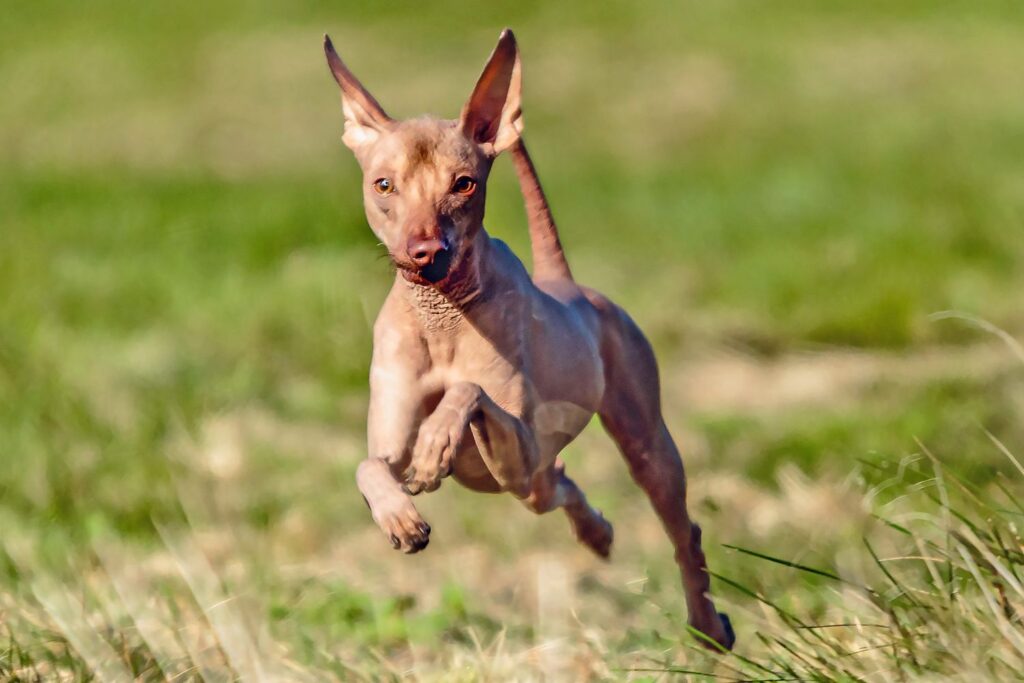

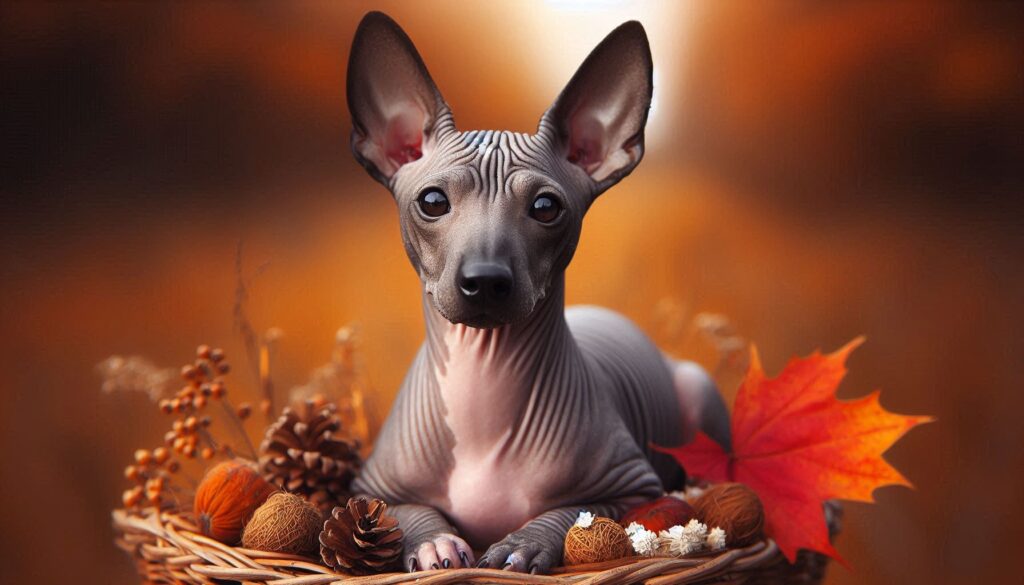
Peruvian Inca Orchid
Another ancient hairless breed, the Peruvian Inca Orchid, shares many similarities with the Xolo, including its skin care needs and affectionate nature.
Chinese Crested
The Chinese Crested comes in both hairless and coated varieties. It is known for its playful and affectionate temperament, making it a good alternative to the Xolo.
American Hairless Terrier
This breed is entirely hairless and shares the Xolo’s need for skin care. It is known for its energetic and friendly personality.
Conclusion
The Mexican Hairless Dog, or Xoloitzcuintli, is a fascinating breed with a rich history and unique characteristics. Its loyal and affectionate nature, combined with its distinctive appearance, makes it a wonderful companion for the right family. If you are considering adding a Xolo to your household, be prepared for a lifetime of love, loyalty, and a bit of extra skin care.
FAQ
Is the Mexican Hairless Dog a dangerous dog?
No, the Mexican Hairless Dog is not a dangerous breed. They are generally gentle and affectionate with their families. However, like any dog, they should be properly trained and socialized.
Is the Mexican Hairless Dog the best guard dog to protect you or your family?
While Xolos are excellent watchdogs due to their alertness and wariness of strangers, they are not typically aggressive and may not be the best choice for a guard dog.
